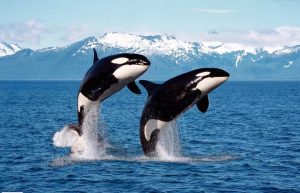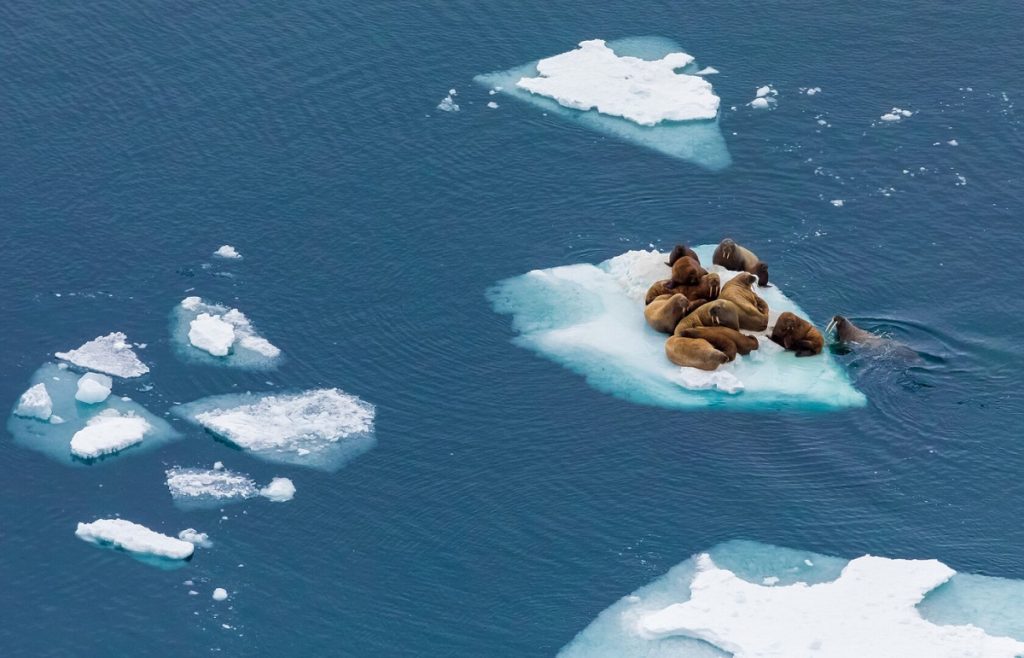
Traveling on an ice floe. Photo: Kirill Uyutnov
The Franz Josef Land Archipelago consists of almost 200 islands lost in the depths of the gray Arctic Ocean. Moreover, the word “earth” in the name is rather a tribute to geology: 87% of the territory is covered by glaciers, and the summer here lasts only a few weeks. However, the archipelago only seems lifeless: 12 species of mammals live on the ice and in the coastal waters, and countless bird markets have chosen the rocks.
Atlantic walruses, ringed seals, lakhtaki sea hares, bowhead whales, belugas, white—faced dolphins, and also polar bears, the owners of the Arctic – here, at the edge of the earth, in high latitudes, you can see animals in their natural habitat. The Russian Geographical Society annually conducts a series of complex Arctic expeditions, during which scientists observe marine mammals, track their populations and develop programs for the conservation of rare species. Part of the research takes place in the waters of Franz Josef Land. We tell you who can be found on the islands of the archipelago.
Polar bears
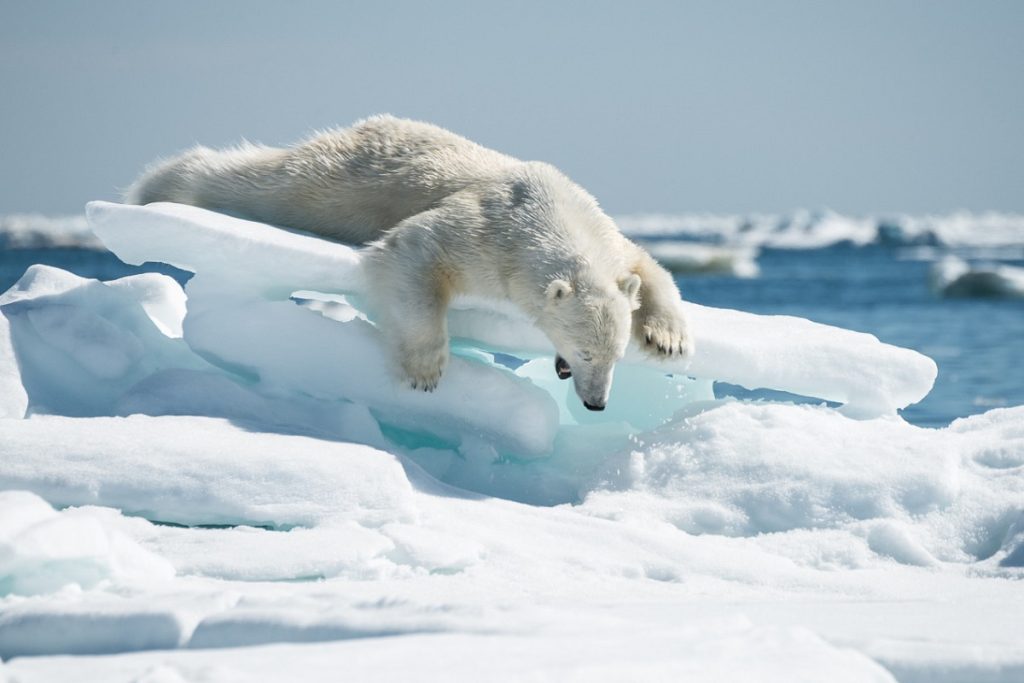
Going hunting. Photo: Grigory Tsidulko
According to scientists, there are about 25-30 thousand Arctic predators in the world, and only 4 thousand live in Russia. Of course, the figures are approximate: studying the polar bear population is a laborious process and requires an integrated approach. Of course, calculations are also complicated by prolonged migrations of predators through hard—to-reach areas of the Arctic: bears live mainly in the zone of continuous ice cover, where they can easily hunt their main prey – seals and other pinnipeds.
The Russian Geographical Society has been researching polar bear populations throughout the Arctic zone for more than 15 years. Experts monitor migration routes and animal health, grants are allocated to support the species, expeditions are organized, films are shot and scientific conferences are held.
One of the largest projects to study the number of polar bears in recent years is the Umka expedition, whose main task is to monitor the state of polar predators, the main indicators of the Arctic ecosystem. In 2022, aviation monitoring was used for these purposes for the first time — accounting for bears using Russian drones.
Similar work is underway on Franz Josef Land. There is a polar bear maternity hospital here — a place that females choose to breed offspring.
In late autumn, on the coast of the islands, they equip themselves with ancestral dens, in which they wait out the bad weather of the polar night together with the cubs. Polar bears do not hibernate, because, unlike their brown counterparts, who feed mainly on plant foods, they simply do not need to wait out this time of year. However, females go into prolonged sleep during pregnancy, which usually lasts from November to April.
This year, scientists plan to continue studying the Kara—Barents Sea population and replenish the database of polar bear movements.
Atlantic walruses
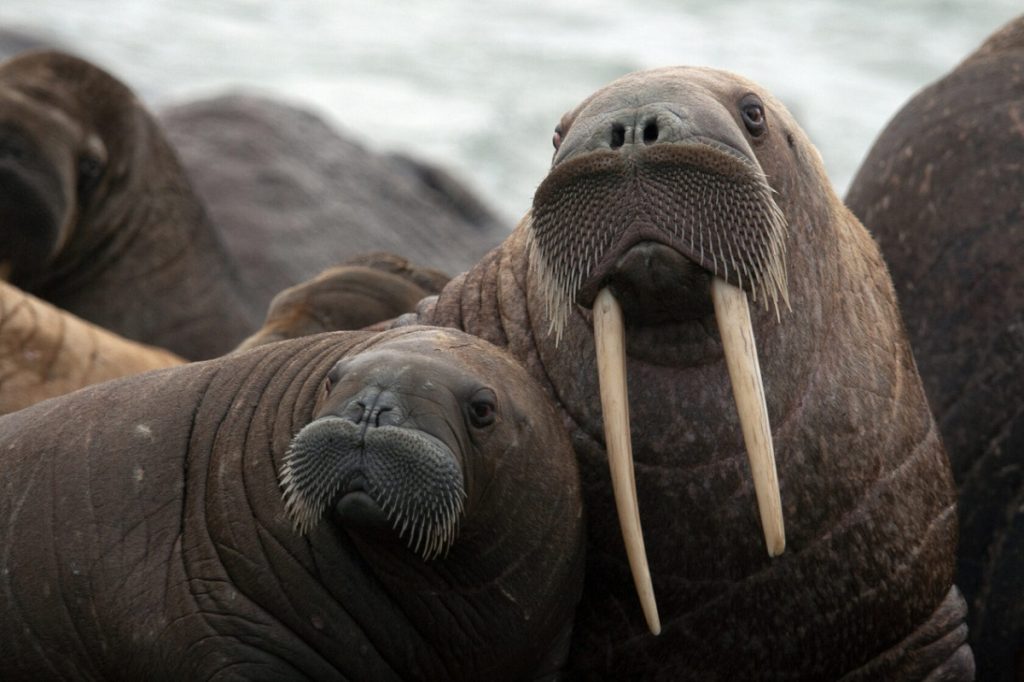
On the rookery. Photo: Natalia Kryukova, participant of the photo contest of the Russian Geographical Society “The most beautiful country“
“Quito is a horse that walks on teeth” — this was the name of these animals back in ancient Rome. Walruses, like polar bears, live in areas of ice fields, but unlike bears, they feed on bottom mollusks. Their amazing tusks can reach up to a meter in length and help the one and a half ton animal get out of the water on an ice floe. For mating and childbirth, walruses living on the coast of the Franz Josef Land archipelago choose pack ice – sea ice floes with a thickness of at least 3 m. Therefore, the threat of climate change has a direct impact on the population, including these mammals.
The females feed their walruses mainly in the sea for a year, and then the cubs stay next to their mother for two or three more years. Grown-up individuals go in search of prey themselves. The main dishes on the walrus menu are small fish and shellfish, which the animals find with the help of sensitive whiskers — vibrissae.
Photo recorders and drones are used to calculate the number of mammals and their movement routes. In addition, scientists on expeditions separately explore walrus rookeries. Their number and main areas can be determined using satellite images. The largest walrus deposit in the history of Arctic research was discovered in 2021 on the island of Eva Liv in the Franz Josef Land archipelago. In addition to the location of rookeries and their size, hydrobiologists use special underwater surveillance cameras to study the nutrition of walruses in the deposits.
On the coast of the islands in mid—spring and early summer, you can watch females with cubs: mammals also choose these places for mating and procreation. This gives scientists the opportunity to study the archipelago as a maternity hospital for the Atlantic walrus. By the way, walruses, like polar bears, are under the patronage of the Russian Geographical Society.
White whales
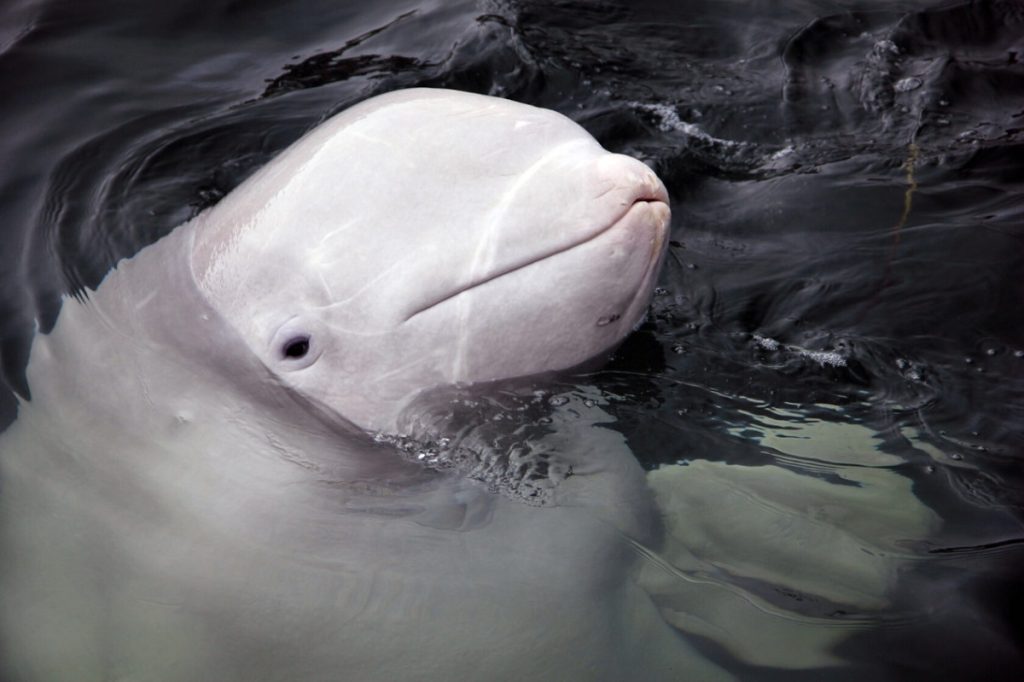
Another resident of the Arctic, who is engaged in the RGO — belukha. Photo: Evgenia Khlebaeva, participant of the photo contest of the Russian Geographical Society “The most beautiful country”
Wingless polar dolphins, white toothed whales, sea canaries — beluga whales have quite a lot of names. These inhabitants of the Arctic seas look like dolphins, but are twice as large: males can reach 6 m in length! Belugas feed mainly on fish, while the adult’s diet is quite plentiful: it needs about 15 kg of food per day. During spawning periods, belugas can follow fish and enter the mouths of large northern rivers — the Yenisei, Amur, Khatanga, and in spring and summer they come to shallow waters where the water is warmer and there is more food. Unlike polar bears and walruses, belugas are not tied to the ice cover, so they can be found much further south — for example, in the coastal waters of the White Sea Karelia and the Solovetsky Islands.
The greatest threat to white whales is the activity of humans actively exploring the Arctic — belugas are incredibly sensitive to water and noise pollution, and their numbers and well-being are affected by the catch of fish they feed on. Programs aimed at the conservation of mammals include studies of the number, distribution and movement of white whale populations using the same aviation accounting and sonar work.
Belugas mate mainly near the coast, where the water is warmer, from early spring to mid-autumn. The female’s pregnancy lasts for 14 months, they bring offspring every three years. The scientists of the expedition to Franz Josef Land plan to check the areas of accumulation of white whales – indicators of the Arctic seas.
Bowhead whales

This is the only baleen whale species that spends its entire life in polar waters. Photo: Mikhail Korostelev
The Svalbard (North Atlantic) population of bowhead whales can be found in the waters of the Franz Josef Land archipelago. These mammals come here in the summer, and return to the Fram Strait (Greenland Sea) for the winter. Whale migration is studied by the Institute of Ecology and Evolution of the Russian Academy of Sciences. With the help of a satellite beacon, which is embedded in the fat layer of an animal, scientists can track the behavior of both individuals and an entire herd. They observe whales mainly from the air — with the help of drones and light helicopters that can be placed on board icebreakers.
Bowhead whales mate, as a rule, in early spring, and pregnancy lasts a little more than a year. Therefore, from April to June, young offspring can be observed. Female cubs are brought about once every three to four years, so the recovery of the population of this endangered species is very slow. Bowhead whales were threatened with extinction at the end of the XIX century: despite the impressive scale of these animals (the size of an adult reaches 20 m in length), whaling turned out to be a fairly simple occupation, which was used by whalers. You could go hunting by rowing, carrying the simplest weapons — spears and harpoons. Today, fishing vessels and even chaotic tourist groups can pose a threat to whales, as the propellers of ships can seriously injure a sea giant.
To protect the population, it is necessary to constantly monitor and collect comprehensive data on the condition of whales — their habits, movement routes, behavioral characteristics and distribution areas.
Narwhals
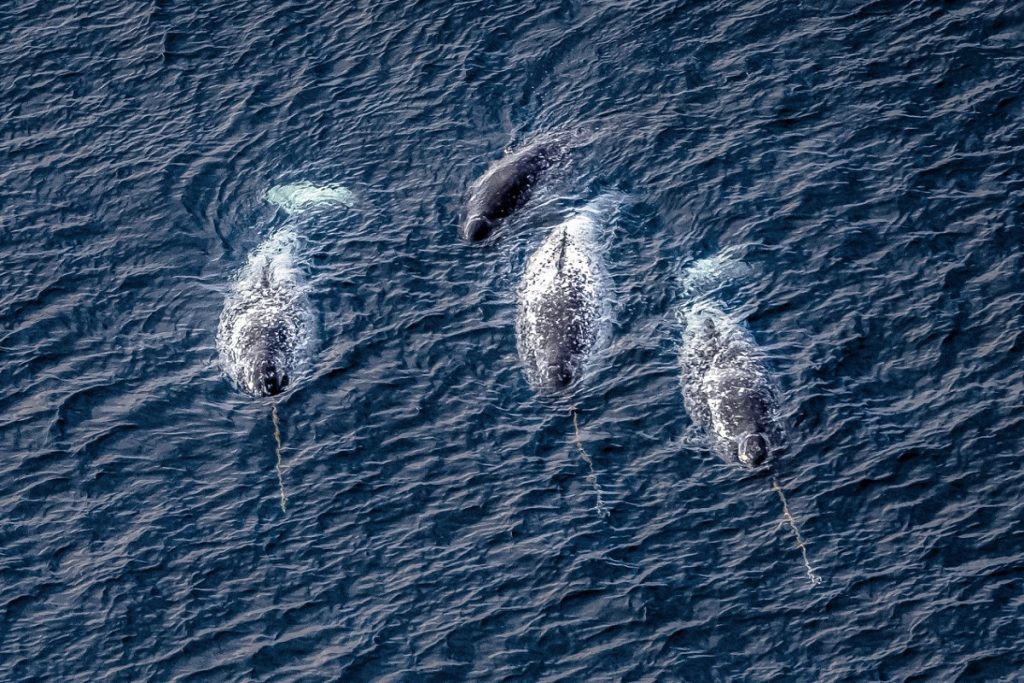
Narwhals, as a rule, keep in small groups of 8-10 individuals. Photo: Kirill Uyutnov
Sea unicorns — this is how these unusual cetaceans were nicknamed because of their impressive three-meter tusks twisted into a spiral. Interestingly, the word “unicorn” is not quite correct here — it is quite rare, but still narwhals with two “horns” are found in nature. The fact is that anatomically these tusks develop from the upper teeth, and narwhal cubs have two of them. In males, tusks, as a rule, are formed from the left incisor, therefore they are slightly displaced relative to the center of the head, and in females they do not grow at all, however, exceptions occur.
What is the main purpose of the narwhal tusk, scientists still do not know. There are studies proving the presence of nerve endings in the bone structure of tusks, so that animals can detect changes in temperature, pressure and salinity of water.
Among other suggestions — participation in mating games and even help in hunting. However, the presence of a massive tusk mainly in males makes the theory of how animals communicate with each other more likely.
The narwhal is a symbol of the Russian Arctic National Park, a sign of the uniqueness, fragility and at the same time strength of these territories. There are very few expeditions to study narwhals. Even today, these animals are extremely difficult to detect — most often scientists record encounters with cetaceans during observations of walruses or bowhead whales. In addition, due to the vagaries of the weather and poor visibility, it is not always possible to identify the animal.
One of the largest projects for the study of sea unicorns was the 2019 Narwhal expedition. The Legend of the Arctic.” For four weeks, scientists explored the waters of the Franz Josef Land archipelago and collected unique information about the habitat of these mammals.
By RGO


